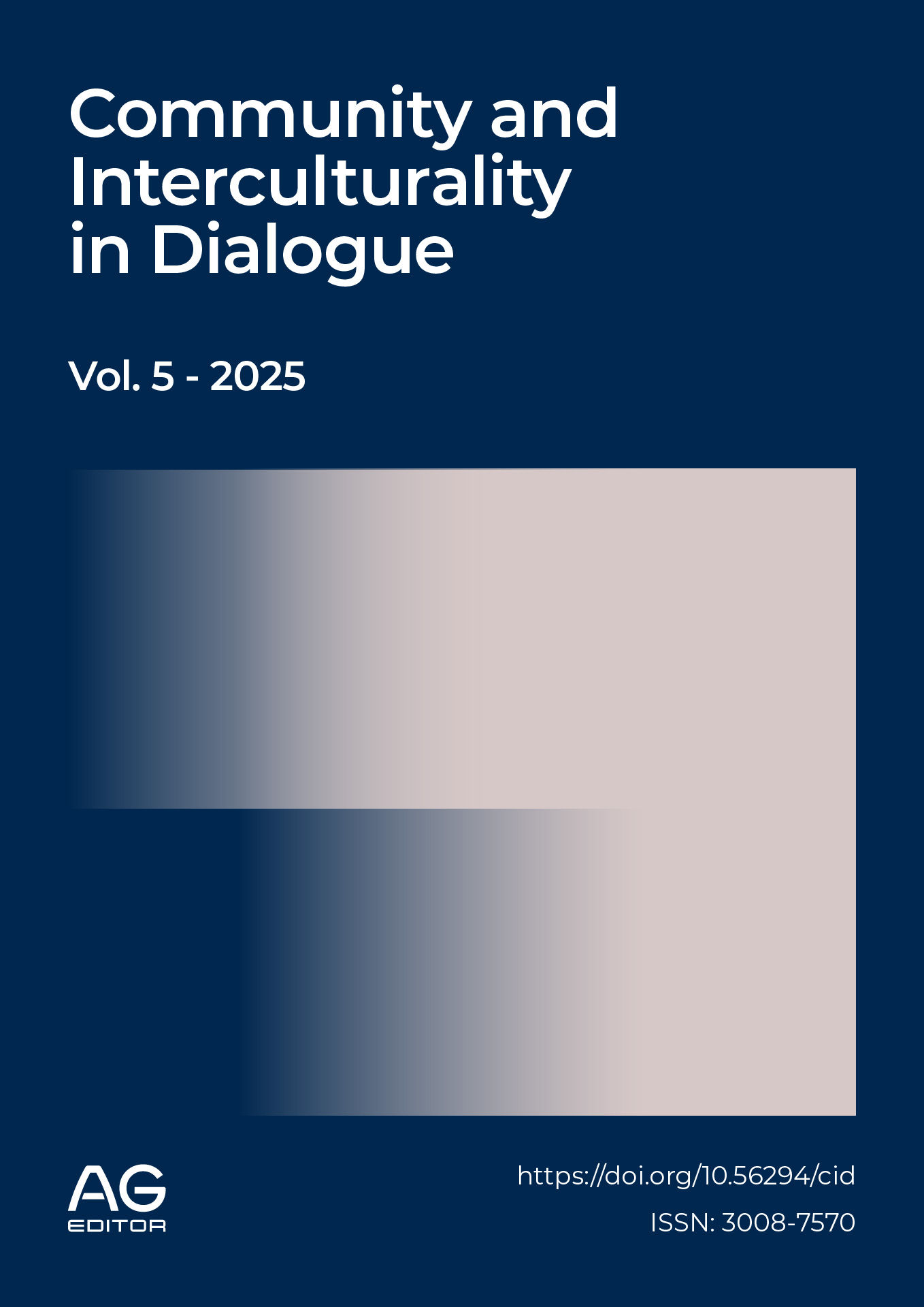Cultural beliefs and parental support for female genital mutilation practices in Ibadan, Oyo State
DOI:
https://doi.org/10.56294/cid2025163Keywords:
Female Genital Mutilation, Cultural Beliefs, Parental Support, circumcision, demographic variables, NigeriaAbstract
Introduction: female genital mutilation (FGM) remains a persistent cultural practice in Nigeria despite decades of advocacy against it. This study examined cultural beliefs and parental support for FGM in Ibadan City, Oyo State of Nigeria, where parental decisions and community norms significantly influence its continuation. The purpose was to assess parents’ knowledge of FGM practices, identify cultural beliefs sustaining the practice, and determine the level of parental support within the study area.
Method: a descriptive survey design was adopted, targeting parents across the five local government areas of Ibadan. Using a multistage sampling technique, 400 respondents were selected, with 342 valid responses analyzed. Data were analyzed using descriptive statistics and chi-square tests at a 0.05, level of significance.
Results: findings revealed that although FGM still exists in Ibadan, perceptions indicate a gradual decline in its prevalence and social endorsement. Most respondents disagreed with cultural beliefs linking FGM to purity, obedience, or family honor, though traces of religious and traditional justification persist. Parental support for FGM was generally low, with stronger support found in rural than urban areas. Hypothesis testing showed that age and education significantly influenced parental support, while gender and religion did not.
Conclusions: The study concludes that cultural beliefs and parental support for FGM are weakening in Ibadan, signaling a gradual cultural shift. It recommends strengthening anti-FGM laws, expanding culturally sensitive health campaigns, integrating FGM awareness into educational curricula, and focusing interventions on rural communities where support remains stronger.
References
1. Farouki L, El-Dirani Z, Abdulrahim S, Akl C, Akik C, McCall SJ. The global prevalence of female genital mutilation/cutting: A systematic review and meta-analysis of national, regional, facility, and school-based studies. PLoS Medicine. 2022 Sep 1;19(9):e1004061.
2. Koski A, Heymann J. Thirty-year trends in the prevalence and severity of female genital mutilation: a comparison of 22 countries. BMJ Global Health. 2019 Mar 2;2(4).
3. Yaya S, Ghose B. Female genital mutilation in Nigeria: A persisting challenge for women’s rights. Social Sciences. 2018 Nov 22;7(12):244.
4. Omigbodun O, Bella-Awusah T, Emma-Echiegu N, Abdulmalik J, Omigbodun A, Doucet MH, Groleau D. Escaping social rejection, gaining total capital: the complex psychological experience of female genital mutilation/cutting (FGM/C) among the Izzi in Southeast Nigeria. Reproductive health. 2022 Feb 14;19(1):41.
5. Ekholuenetale M. Prevalence, Socio-economic Factors and Correlates of Mother-to-Daughter Female Genital Cutting in Nigeria. Nigerian Postgraduate Medical Journal. 2025 Jul 1;32(3):223-32.
6. Onah CK, Ossai EN, Nwachukwu OM, Nwankwo GE, Mbam HO, Azuogu BN. Factors associated with the practice of and intention to perform female genital mutilation on a female child among married women in Abakaliki Nigeria. BMC women's health. 2023 Jul 17;23(1):376.
7. Alradie-Mohamed A, Kabir R, Arafat SY. Decision-making process in female genital mutilation: a systematic review. International journal of environmental research and public health. 2020 May;17(10):3362.
8. Ilo CI, Darfour-Oduro SA, Okafor JO, Grigsby-Toussaint DS, Nwimo IO, Onwunaka C. Factors associated with parental intent not to circumcise daughters in Enugu State of Nigeria: an application of the theory of planned behavior. African Journal of Reproductive Health. 2018 Apr 18;22(1):29-37.
9. Ibrahim SB, Ukaibe AG. Analysis of Information Sources, Knowledge and Attitude of Gbongan Residents (Osun State) towards Female Genital Mutilation. Journal of Community & Communication Research. 2023 Dec 31;8(2):162-75.
10. Oni TO, Okunlola DA. Contextual determinants of generational continuation of female genital mutilation among women of reproductive age in nigeria: analysis of the 2018 demographic and health survey. Reproductive Health. 2024 Mar 26;21(1):39.
11. Fagbamigbe AF, Morhason-Bello IO, Kareem YO, Idemudia ES. Hierarchical modelling of factors associated with the practice and perpetuation of female genital mutilation in the next generation of women in Africa. Plos one. 2021 Apr 23;16(4):e0250411.
12. Matanda DJ, Sripad P, Ndwiga C. Is there a relationship between female genital mutilation/cutting and fistula? A statistical analysis using cross-sectional data from Demographic and Health Surveys in 10 sub-Saharan Africa countries. BMJ open. 2019 Jul 1;9(7):e025355.
13. Melese G, Tesfa M, Sharew Y, Mehare T. Knowledge, attitude, practice, and predictors of female genital mutilation in Degadamot district, Amhara regional state, Northwest Ethiopia, 2018. BMC Women's Health. 2020 Aug 14;20(1):178.
14. Chaokromthong K, Sintao N. Sample size estimation using Yamane and Cochran and Krejcie and Morgan and green formulas and Cohen statistical power analysis by G* Power and comparisions. Apheit international journal of interdisciplinary social sciences and technology. 2021 Dec 24;10(2):76-86.
15. Binkova A, Uebelhart M, Dällenbach P, Boulvain M, Gayet-Ageron A, Abdulcadir J. A cross-sectional study on pelvic floor symptoms in women living with female genital mutilation/cutting. Reproductive health. 2021 Feb 12;18(1):39.
16. Bjälkander O, Grant DS, Berggren V, Bathija H, Almroth L. Female genital mutilation in Sierra Leone: forms, reliability of reported status, and accuracy of related demographic and health survey questions. Obstetrics and gynecology international. 2013;2013(1):680926.
17. Bonett DG, Wright TA. Cronbach's alpha reliability: Interval estimation, hypothesis testing, and sample size planning. Journal of organizational behavior. 2015 Jan;36(1):3-15.
18. Oladokun BD, Ogunjimi BE, Oyetola SO, Orubebe ED, Enakrire RT. Library management in an era of disruption: Assessing skills and knowledge of future academic librarians in Nigeria. Information Development. 2025 Mar 7:02666669251350380.
19. Yahaya DO, Oladokun BD, Owolabi KA, Aboyade WA, Yemi-Peters OE, Jibrin YA, Omale AI, Salihu AM, Seidu AE, Abdulkareem OM. Role of public libraries in the dissemination of information to rural dwellers in Kogi State, Nigeria. Library Management. 2025 Apr 8;46(1/2):41-56.
20. Evans C, Tweheyo R, McGarry J, Eldridge J, Albert J, Nkoyo V, Higginbottom G. Crossing cultural divides: a qualitative systematic review of factors influencing the provision of healthcare related to female genital mutilation from the perspective of health professionals. PloS one. 2019 Mar 4;14(3):e0211829.
21. González-Timoneda A, Sánchez AC, González-Timoneda M, Ros VR. Cultural beliefs, perceptions, and experiences on female genital mutilation among women and men: a qualitative analysis. Journal of interpersonal violence. 2022 Sep;37(17-18):NP15504-31.
22. Saadu UT, Obafemi KE, Adeyemi CO. Female genital mutilation: Parental perception and religious point of view. ASEAN Journal of Religion, Education, and Society. 2023;2(2):75-82.
23. Doucet MH, Delamou A, Manet H, Groleau D. Beyond the sociocultural rhetoric: female genital mutilation, cultural values and the symbolic capital (honor) of women and their family in Conakry, Guinea—a focused ethnography among “positive deviants”. Sexuality & Culture. 2022 Oct;26(5):1858-84.
24. Cappa C, Thomson C, Murray C. Understanding the association between parental attitudes and the practice of female genital mutilation among daughters. PLoS One. 2020 May 21;15(5):e0233344.
Downloads
Published
Issue
Section
License
Copyright (c) 2025 Olugbade Ayopo Dawodu, Aderonke Olaitan Adesina, Iyanu Emmanuel Olatunbosun (Author)

This work is licensed under a Creative Commons Attribution 4.0 International License.
The article is distributed under the Creative Commons Attribution 4.0 License. Unless otherwise stated, associated published material is distributed under the same licence.






